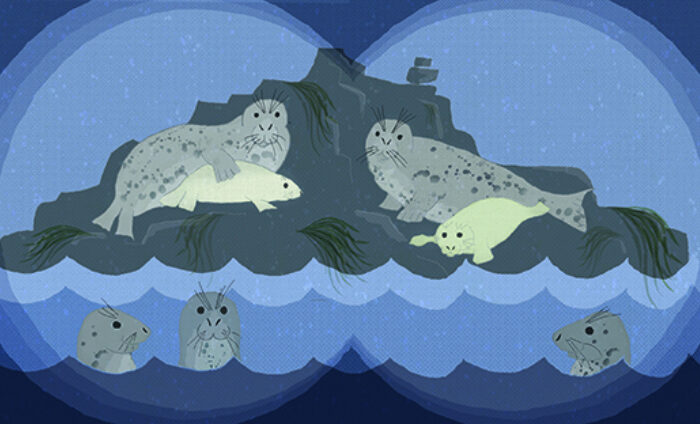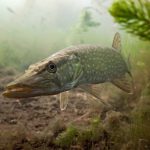
Wild Swimming with Grey Seals
Ungainly on land, in the water seals are powerful and elegant – much like some outdoor swimmers, writes Susanne Masters.
Every time I’ve seen seals it’s been too exciting to remember to look at their nose and decide if it is Roman. In distinguishing between the two species of seal that breed in UK waters, the Common Seal (Phoca vitulina) and Grey Seal (Halichoerus grypus), the noses are decisive. Grey seals have a long snout, which appears Roman in contrast to the short snout of Common seals. It isn’t often that you have the two species side by side for a nose comparison. Another way to tell them apart is that grey seals have almost parallel nostrils while the nostrils of common seals meet at the bottom forming a V shape.
Fully-grown grey seals can weigh over 300kg – an intimidating sized animal to meet in the water, especially when seals are inquisitive and use their mouths as well as flippers to investigate objects of interest, which can include swimmers. But being joined in the water by a seal is not something to fear. When the seals instigate interaction and they are not cornered they will satisfy their curiosity and indulge in playful behaviours – more like a giant puppy than a scary beast. Avoid obstructing them, don’t pursue them and if they choose to interact with you enjoy meeting one of our most charismatic mammals.
Taking a boat trip on the glass-bottomed boat at Gairloch on Scotland’s west coast, I had a clear view of grey seals swimming in their arabesque style. Hefty seal bodies that seem ungainly when hauled out on a beach are transformed by the medium of water into a powerful and elegant vessel. They spiral in flowing lines, intertwine and extend through the water: a parallel to the grace and strength of outdoor swimmers I know who have a little bioprene (a nice layer of subcutaneous fat that works like neoprene)! Their buoyancy and tolerance of cooler temperatures can give their winter sea swimming an appearance of effortlessness, in comparison to musclebound pool-acclimatised athletes.
There is a time of year when grey seals need space – the convergent breeding and pupping seasons. Pupping can be as early as September in Cornwall and as late as December in the Shetlands. Those limpid-eyed fluffy white pups look irresistibly cute. In their first three or four weeks of life they are entirely dependent on their mother, who may abandon the pup if disturbed. No one wants to get caught in between a pair of randy 300kg males competing over females. So it is best to stay away and avoid swimming at beaches where seals are hauled out during breeding and pup season. Watch them from a distance, making sure you are not between them and the water, and use binoculars for a closer view. Our cool seas are home to about 40 per cent of the global population of grey seals, a great example of not needing to travel abroad to see something a little bit special.
Where to see grey seals in the UK
1. Monach Isles, Outer Hebrides, Scotland
2. Falmouth, Cornwall, England
3. Ramsey Island, Pembrokeshire, Wales
4. Skerries, County Dublin, Ireland
5. Farne Islands, Northumberland, England








